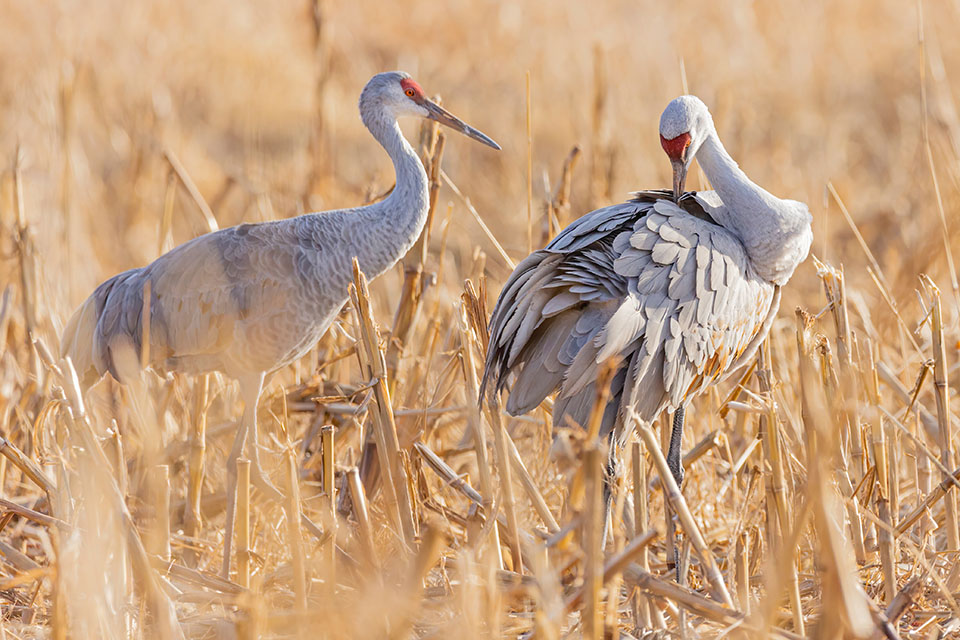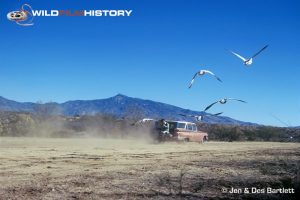Migration Time

Last weekend at my home in Bozeman, I was startled to awareness by a distinct clattering that reminded me of summer afternoons on the Snake River. Except much, much louder. Entranced, I listened for a moment, wandered to the backyard, and gazed skyward for the source. Turns out the cacophonous clattering was emanating from a large flock of at least 60 Sandhill Cranes. They wheeled above me in giant circles, calling out in unison while rising higher and higher into the sky. I was mesmerized. Though I’ve often seen Sandhill Cranes along the Snake River, I’ve never seen more than five or six at a time. And here I was, seeing dozens and dozens, right in the middle of town. It was migration time.
Sandhill Cranes have many distinct vocalizations, but the one we most commonly associate with these majestic birds is that trademark squeaky clatter. The Cornell Bird Guide tells us that the tone is derived within the bird’s long trachea, which serves to lower the pitch of the vocalization and creates multi-layered overtones. To hear such an enormous flock calling out together was a truly memorable experience.
The minutes ticked by and soon the Cranes flew onward to rest and feed on the fields south of town on their way over the Yellowstone Plateau to winter habitats in Texas and Mexico.
I first learned about the Sandhills many years ago when some close family friends, wildlife filmmakers Des and Jen Bartlett, spent time in Jackson studying local beaver populations. Two years later they completed a film about Snow Geese, and watching that film had a profound effect on me. While filming the Snow Geese migration, Des and Jen ended up fostering about a dozen orphaned Snow Geese and an abandoned Sandhill colt. Though the young birds imprinted on the filmmakers – to comic effect – all of the birds were successfully returned to the wild. A youngster myself when I saw this film, I feel like I imprinted on Sandhill Cranes, and have been scanning the skies and the riverbanks for them ever since.
Some Facts About Sandhill Cranes:
Cranes are among the oldest birds; a crane fossil was found in Nebraska that dates back nearly 10 million years. The oldest Sandhill fossil is about 2.5 million years old. Sandhills have 7-foot wingspan, and stand about 4 feet tall. In the wild, they can live for nearly 40 years. They eat just about everything, from plants and roots, to grains, insects, and small animals. They can fly up to 30 miles per hour and have a range of nearly 300 miles a day. Click below to hear the song of the Sandhills.

